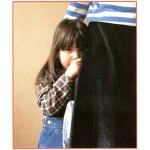

In the pink, sad and blue. Purple with rage and white as driven snow. Are you looking at your life through rose tinted glasses?
Madhu Nanda, my colleague journalist, talked to Nina Guleria, a colour therapist and healer, asking if we all had an inner spectrum of colour, and by using colours could we influence our mood? Was colour a catalyst for our healing? The influence of colour on our physical, mental, emotional and spiritual being has been studied by colour therapists and has a firm scientific basis.
Colour is light energy. Newton passed a beam of sunlight through a prism which dispersed into vibgyor, all the seven colours of the rainbow: violet, indigo, blue, green, yellow, orange and red. The Ancients understood the quality of colour, but when Paracelsus revived this knowledge in the Middle Ages and healed with light, herbs and music he was ridiculed throughout Europe and his manuscripts were burned. Now he is considered by many to be one of the greatest doctors and healers of his time.
Jacob Liberman, pioneer of light therapy, said medicine of the future is light. “We are healing ourselves with that which is our essence.” Remember E.T. and his glowing finger? The central principle of all these techniques is that disease is a result of our natural vibrational energy being altered or unbalanced. Healing is the restoration of this balance. New approaches to health make use of light and other vibrations rather than drugs and chemicals. “Like sound, light also travels in waves,” explained Nina, “but different colours have different wavelengths and since these waves also represent energy from their size and speed of travel, they effect the space and objects that they pass through. We humans are resonating to our own electro-magnetic field created by the chakras in our bodies, and their various colours, that in turn make our aura. So light/colour sources thus formed, meet and mingle, and create their own combinations and effects.”
Nina has chosen light rather than chemicals over the last forty years, ever since her daughter was a toddler. Nina related the incident, “my daughter fell down at a friend’s house and cut her knee. Our hosts immediately asked for the blue water to be brought”. Nina expected gentian violet, a tincture or some blue spirit but along came a bottle of clear, colourless water. She told her child it is just water, it will not sting, but it did. The bleeding stopped and the wound healed perfectly. “Ever since, blue became our only antiseptic. We swabbed all our hurts with blue water”. Nina began to solarise her own water but spoke warily to others of her aqueous find. However, it was too early to say ‘put this bottle in the sun’. She accepted that people thought she was dotty, but in her home the dogs got blue water and her children had hairy knees from all the blue water that was dabbed on them. Yes, blue grows hair too. Her parents made coloured oils for her. The oils needed forty days in the sun.
Bishawher Das was the book that guided Nina’s healing with colour for the next 20 years. The only course she found required her to join full time for four years. Nina took the decision to study under different teachers in India as a more practical option for a mother with four children.
Colour is present in our bodies as the seven chakras or energy vortices, each emitting a distinct sound and colour, each with its own emotional, psychological and spiritual characteristics. Moving down the spine, the colours follow the rainbow. Each has a domain that affects several organs. Broadly, violet corresponds to the pineal gland and universal love, indigo to the pituitary, bringing focus and insight, blue to the thyroid for freedom of expression, integrity, endurance and kindness, green to the heart and unconditional love.
Yellow corresponds to the solar plexus and yellow balance is logic, humour, warmth and personal power. Orange governs vitality, passion and enthusiasm and the root chakra at the base of the spine is related to the adrenal glands and to survival, courage and self-preservation. New colours are aqua for the thymus gland and magenta which offers emotional balance to the system.
People who read auras, the electromagnetic field that surrounds our body, can tell which chakra needs healing. They see things at the subtle level before they manifest as disease. The flow of energy may be blocked by congestive waste and debris from negative thoughts and other toxins. “Feeling low? Sit down, read something uplifting, listen to music anything that makes you go in a positive mode: wearing the healing colours or imbibing them through food and drink helps restore balance”.
How do we imbibe colours through food? Let’s say you have a bowl of salad. When all the nutrients get to the cell, the transference of the energy from the carrot or tomato to the cell is always in the form of light in its original colour. You cannot inject gross chewed food into a fine delicate cell. “Don’t eat beige foods,” explained Nina, “the body does not know what to do with beige.” If you can’t eat foods of all colours, you can imbibe these colours by drinking solarised water. Colour charged waters are charged by exposing water in coloured bottles to sunlight for four hours on a sunny day and all day on a cloudy one. You may also wrap plain glass bottles of water with two layers of cellophane paper with no chinks. To prevent discharging the energy into the earth, we place the bottles on a wooden board, or plastic sheet, both bad conductors of electricity. Coloured oils like sesame and linseed that do not solidify in cold weather are made by exposing the oil to sunlight for 40 days.
“Blue water is cooling, good for heat stroke,” reiterated Nina, “dab it on your head before going out on a hot day; if you forget, drink some when you get back.” Good for gargling, for nosebleeds and sunburn, green water aids digestion, assimilation and improves eyesight. During a yoga session you are asked to gaze on green grass because it produces spiritual calm and ability to focus. Green and blue mixed are good for acidity and dyspepsia. Yellow is a laxative but must be used with caution. Red is the hottest colour, its wavelength agitates everything in its path. Red relieves rheumatism, lumbago and athlete’s foot. “At a conference, if you feel tired and cannot concentrate, visualise breathing in red light, it will in invigorate you”, explained Nina.
Colour is light energy, it is a catalyst for our healing. The influence of colour on our physical, mental, emotional and spiritual selves has been studied by colour therapists and has a firm scientific basis.





Thanks, great post. I love a colourful plate of food, it beckons you to eat and eat and eat!
Lovely post! Was surprised to read that red can be invigorating….